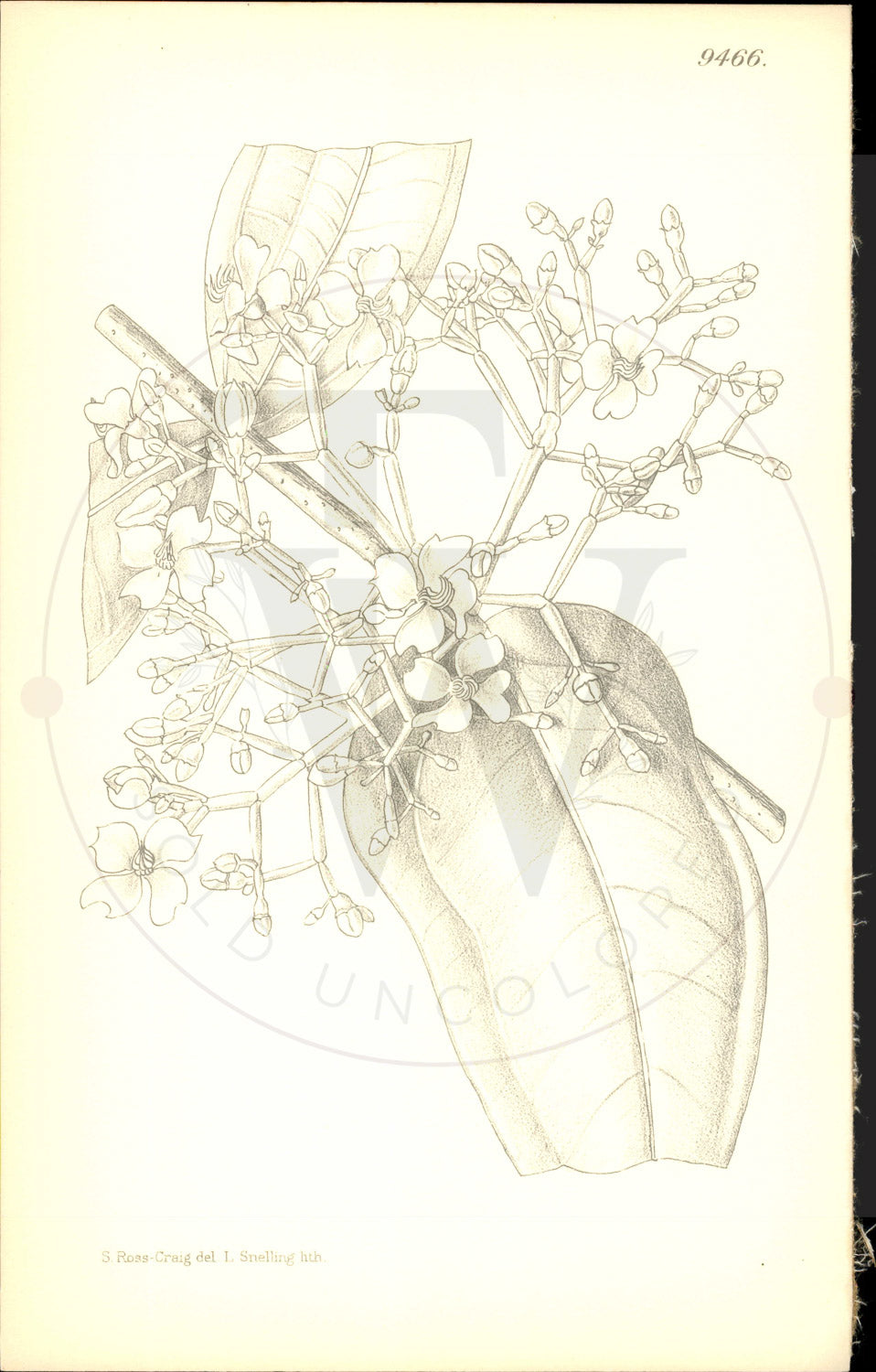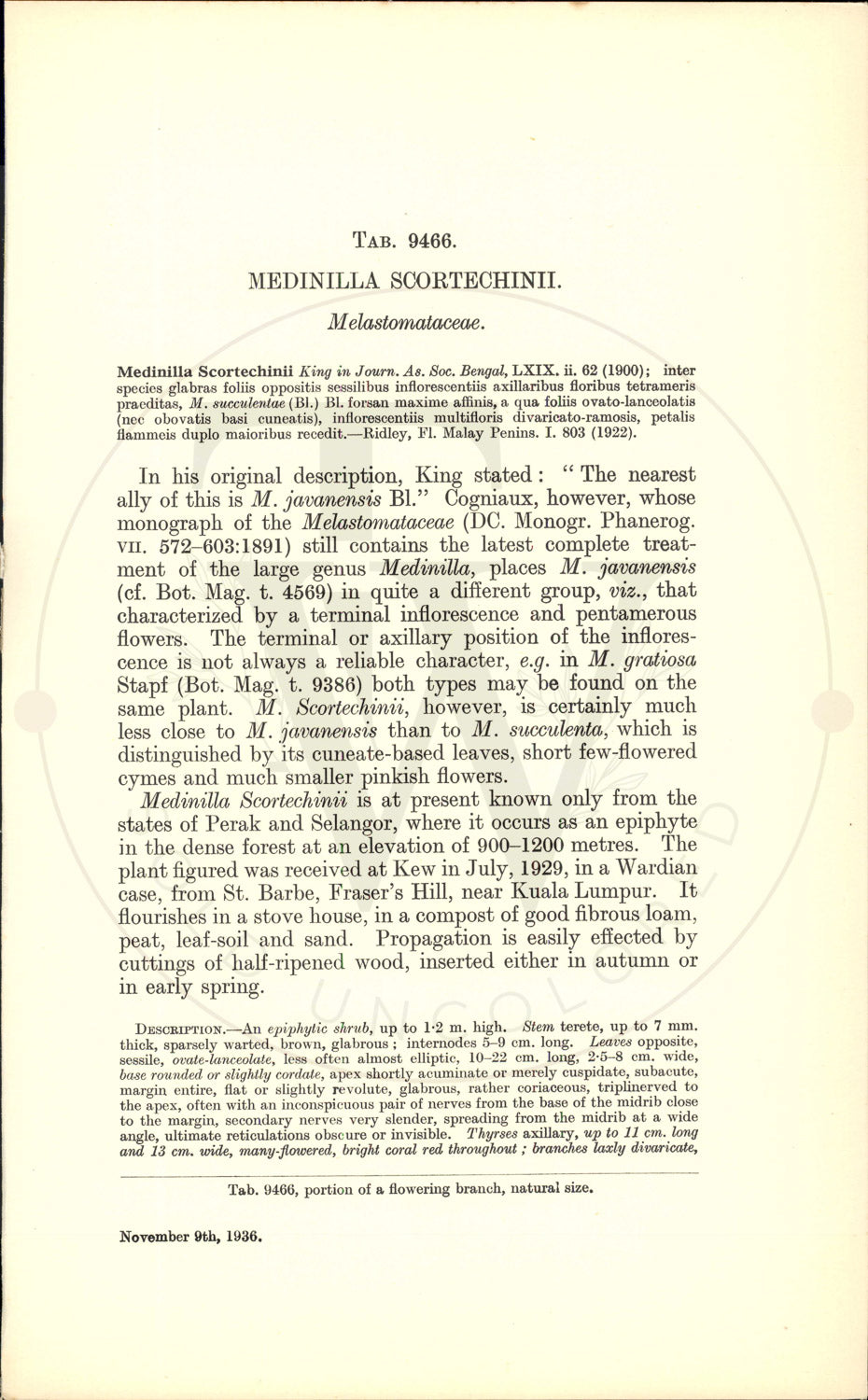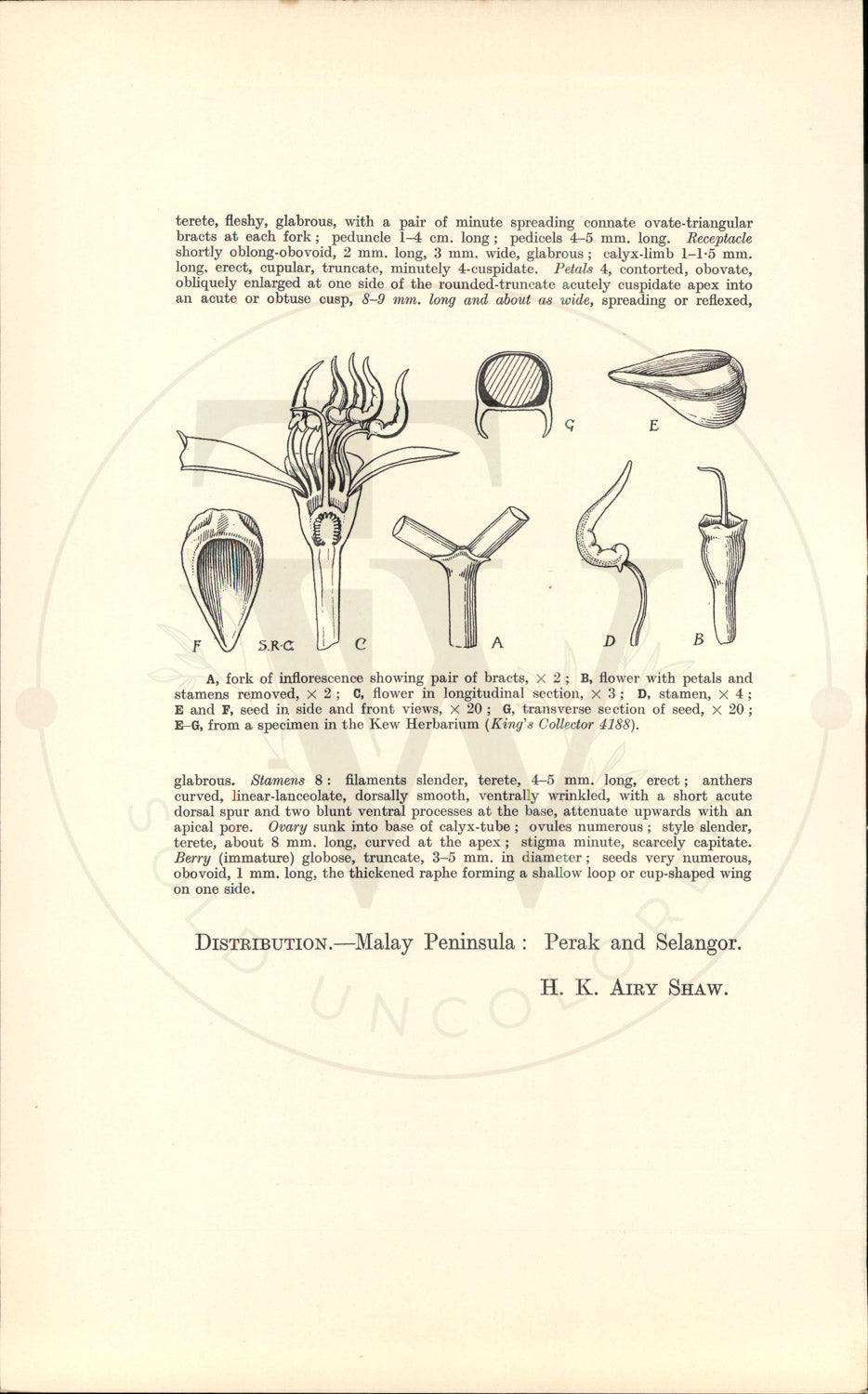Curtis Botanical Magazine
Plate 9466 - Medinilla scortechinii
Plate 9466 - Medinilla scortechinii
Couldn't load pickup availability
Curtis's Botanical Magazine - Plate 9466
Medinilla scortechinii
Publication Date: January 1st, 1934
Distribution: -Malay Peninsula: Perak and Selangor • Tab Author: H. K. AIRY SHAW
Botanical Description
Same plant. M. Scortechinii, however, is certainly much less close to M. javanensis than to M. succulenta, which is distinguished by its cuneate-based leaves, short few-flowered cymes and much smaller pinkish flowers. Medinilla Scortechinii is at present known only from the states of Perak and Selangor, where it occurs as an epiphyte in the dense forest at an elevation of 900-1200 metres. The plant figured was received at Kew in July, 1929, in a Wardian case, from St. Barbe, Fraser's Hill, near Kuala Lumpur. It flourishes in a stove house, in a compost of good fibrous loam, peat, leaf-soil and sand. Propagation is easily effected by cuttings of half-ripened wood, inserted either in autumn or in early spring. DESCRIPTION. An epiphytic shrub, up to 1.2 m. high. Stem terete, up to 7 mm. thick, sparsely warted, brown, glabrous; internodes 5-9 cm. long. Leaves opposite, sessile, ovate-lanceolate, less often almost elliptic, 10-22 cm. long, 2-5-8 cm. wide, base rounded or slightly cordate, apex shortly acuminate or merely cuspidate, subacute, margin entire, flat or slightly revolute, glabrous, rather coriaceous, triplinerved to the apex, often with an inconspicuous pair of nerves from the base of the midrib close to the margin, secondary nerves very slender, spreading from the midrib at a wide angle, ultimate reticulations obscure or invisible. Thyrses axillary, up to 11 cm. long and 13 cm. wide, many-flowered, bright coral red throughout; branches laxly divaricate,.
About This Print
Original black and white uncolored botanical print from Curtis's Botanical Magazine (established 1787). This 9000s series print is from unissued publisher stock, never hand-colored, representing the authentic plate as it appeared in the magazine. Edited by Sir Arthur William Hill for The Royal Horticultural Society, London.
Share







